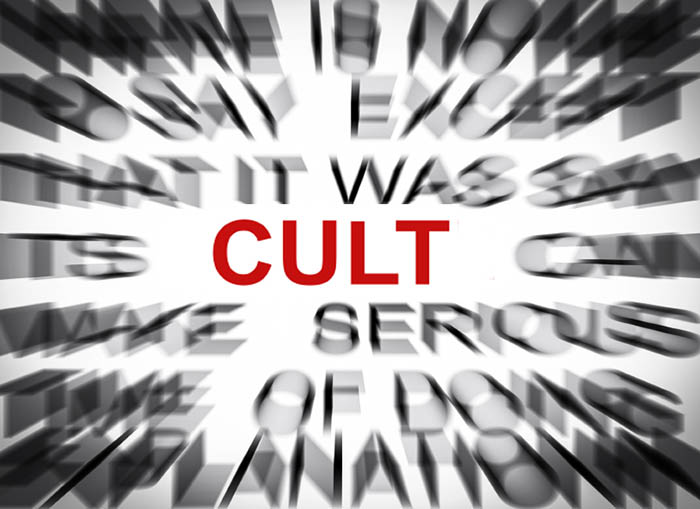MEK or KKK, Cults are destructive
For those familiar with the Mujahedin Khalq Organization (the MKO/ MEK/ the Cult of Rajavi) the group’s efforts to represent itself as an opposition group who fights for freedom of Iranians is both absurd and ludicrous.

The MKO has notorious reputation in helping Saddam Hossein in the Iran—Iraq war during which many Iraqis along with Iranians were killed as a result. It goes without saying that MKO was funded and supported by Saddam. This is why almost all Iranians and Iraqis loathed the group.
Human Rights Watch has been clear on the MKO’s cult-like practices that include abuses which range “from detention and persecution of ordinary members wishing to leave the organization, to lengthy solitary confinements, severe beatings, and torture of dissident members.” [1]
Elizabeth Rubin a contributor to The New York Times Magazine, where her article”The Cult of Rajavi”appeared in July2003, warns American supporters of the MKO, “Mujahedeen Khalq is not only irrelevant to the cause of Iran’s democratic activists, but a totalitarian cult that will come back to haunt us.” [2]
“Friendships and all emotional relationships are forbidden,” Rubin writes about the atmosphere ruling the Cult of Rajavi. “From the time they are toddlers, boys and girls are not allowed to speak to each other. Each day at Camp Ashraf you had to report your dreams and thoughts.” [3]
Considering such reports and documents on violations of human rights inside the MKO camps, Jon Gambrell of the Associated Press states his concerns over the paid sponsorship for the group by the side of some factions of the Trump administration. “An official in U.S. President Donald Trump’s cabinet and at least one of his advisers gave paid speeches for an Iranian exile group that killed Americans before the 1979 Islamic Revolution, ran donation scams and saw its members set themselves on fire over the arrest of their leader,” he writes. “The U.S. State Department has described the MEK as having”cult-like characteristics.”When French police arrested Rajavi in 2003 as part of a terrorism investigation, MEK members responded by lighting themselves on fire. At least two people died.” [4]
Gambrell reveals the US newly-elected cabinet member for her paid support for the formerly terrorist designated MKO. “Elaine Chao, confirmed this week as Trump’s transportation secretary, received $50,000 in 2015 for a five-minute speech to the political wing of the Mujahedeen-e-Khalq, previously called a”cult-like”terrorist group by the U.S. State Department.” [5]
Paid advocacy for the MKO is actually a disgrace for its sponsors in Washington due to the MKO’s violent past and cult-like present. Mehdi Hassan of the Intercept states, ”These days, the organization — run by husband and wife Massoud and Maryam Rajavi, though the former’s whereabouts are unknown and he is rumored to be dead — claims to have renounced violence and sells itself to its new American friends as a 100 percent secular and democratic Iranian opposition group.” [6]
However, Hassan suggests that its terrorist background is not the biggest problem with the MKO. “Plenty of violent groups that were once seen as “terrorists” later abandoned their armed struggles and entered the corridors of power — think of the Irish Republican Army or Mandela’s African National Congress,” he writes. “Nor is it that the MEK lacks support inside of the Islamic Republic, where it has been disowned by the opposition Green Movement and is loathed by ordinary Iranians for having fought on Saddam Hussein’s side during the Iran-Iraq war.” [7]
He correctly ends his argument against the MKO by warning the US politicians about the group’s cult-like nature. “Rather, the biggest problem with U.S. politicians backing the MEK is that the group has all the trappings of a totalitarian cult,” he states. ”Don’t take my word for it: A 1994 State Department report documented how Massoud Rajavi “fostered a cult of personality around himself” which had “alienated most Iranian expatriates, who assert they do not want to replace one objectionable regime for another.” [8]
More tangible for the American audience is the argument by Sam Ghanchi the editor of Iranscope who compares the Cult of Rajavi with the notorious American cult, Ku Klux Klan (KKK)*. “In our eyes, PMOI is the Ku Klux Klan of 150 years ago and not Klan of today which at least acts civilized and does not lynch people. PMOI has agents harassing and threatening pro-democracy activists who oppose PMOI, on the Internet and elsewhere,” he states in his website. “We do not want the death of any human being but want the death of this *organization* which is a Shiite version of Daesh and goes by the names of Mojahedin khalgh organization, PMOI, MEK, MKO.” [9]
*The Ku Klux Klan, with its long history of violence, is the most infamous – and oldest – of American hate groups. Although black American shave typically been the Klan’s primary target, it also has attacked Jews, immigrants, gays and lesbians and, until recently, Catholics. Over the years since it was formed in December 1865, the Klan has typically seen itself as a Christian organization, although in modern times Klan groups are motivated by a variety of theological and political ideologies. The group has been an ardent supporter of Donald Trump during its presidential campaign.
By Mazda Parsi
Sources:
[1] Human Rights Watch, NO EXIT
[2] Rubin, Elizabeth, An Iranian Cult and Its American Friends, the New York Times, August 13, 2011
[2] ibid
[3] ibid
[4]Gambrell, Jon, Trump cabinet pick paid by ‘cult-like’ Iranian exile group, The Associated Press, February 05, 2017
[5] ibid
[6] Hassan, Mehdi, Here’s Why Washington Hawks Love This Cultish Iranian Exile Group, The Intercept,July 7, 2017
[7] Ghandchi, Sam, To France: Expel Maryam Rajavi, ghandchi.com, August 17, 2017

